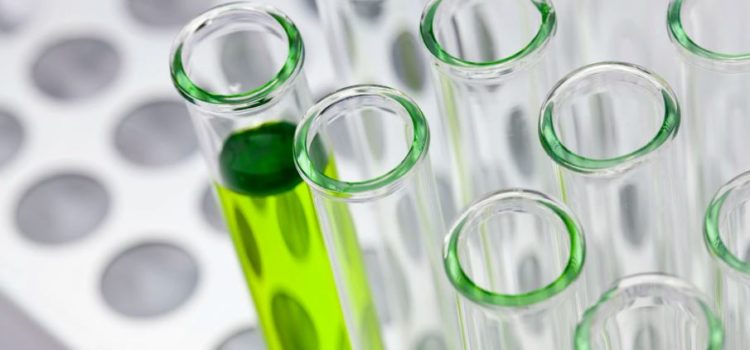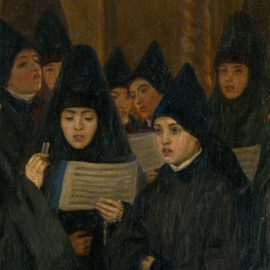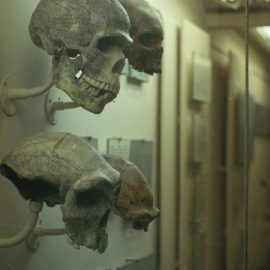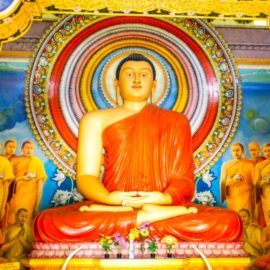

This article is an excerpt from the Shortform summary of "The Immortal Life of Henrietta Lacks" by Rebecca Skloot. Shortform has the world's best summaries of books you should be reading.
Like this article? Sign up for a free trial here .
How did HeLa cells become such an important part of scientific development and discoveries? Who was the doctor that turned the tissue from Henrietta Lacks into the HeLa cells? What did Dr. George Gey gain from his efforts?
George Otto Gey was a tissue researcher at Johns Hopkins when Henrietta Lacks was a patient. He made a deal with Lacks’ surgeon to use her tissue to make lasting cells.
Learn more about Dr. George Gey, HeLa, and how his discovery impacted his life.
In 1951, Henrietta went to Johns Hopkins Hospital after discovering a lump on her cervix. Her doctor took a sample of the lump for a biopsy. The tumor proved malignant, and Henrietta began to undergo radiation treatments—which, at the time, consisted of radium plaques placed directly on the tumor. The surgeon performing the initial treatment, without telling Henrietta, excised two slivers of tissue from her tumor for a researcher at Hopkins named George Gey (pronounced like “guy”).
The Deal Dr. George Gey Made
The deal was between gynecologist Richard Wesley TeLinde and George Otto Gey: If TeLinde provided Gey with tissue samples to experiment with, Gey would try to grow them in the lab he operated alongside his wife, a surgical nurse named Margaret Gey.
Henrietta, unbeknownst to her, became one of TeLinde’s and George and Margaret Geys’ subjects. When she returned to the hospital after receiving her diagnosis—rather than tell Day or her family that she’d been diagnosed with a malignant tumor, she simply told them the doctors needed to evaluate her and give her some medicine—she signed a consent form to be operated on, was subjected to a battery of tests, and eventually treated with radium, the gold standard for cancer treatment at the time. (It was later discovered to cause cancer itself.) Before her surgeon applied the radium to her cervix, however, he took a small sample of both healthy tissue and cancerous tissue and sent it off to the Geys’ lab.
After getting the tissue to George Gey, HeLa was made.
George and Margaret Gey’s Lab
There, a lab assistant put Henrietta’s tissue samples into test tubes designed by Dr. George Gey himself. The tubes were specially made to fit in a cylindrical roller drum that would rotate extremely slowly—two or fewer revolutions per hour. The thinking was that cell cultures needed to be in constant motion, like blood and other fluids in the human body, in order for the cells to replicate. With the roller drum created by George Gey, HeLa cells could be grown was possible.
George and Margaret Gey had also experimented with culture media, using everything from chicken plasma to umbilical-cord blood in an attempt to get cells to grow; and Margaret Gey, drawing on her experience in surgical theaters, had instituted strict guidelines for keeping the lab sterile. There was no set method for growing cells in the lab, because no researcher had been able to keep cells alive in culture for more than brief periods.
In its effort to standardize the recipe for culture medium and instructions for handling cell cultures, George Otto Gey’s lab partnered with a small biological supply company named Microbiological Associates. That company would become the first for-profit cell distribution firm, shipping out HeLa cells for less than 50 dollars a vial to customers like the National Institutes of Health (NIH). With the partnership with Dr. George Gey, HeLa distribution was underway.
The Impact on Dr. George Gey and the World
The truth, however, was that Gey was a terrible businessman and never rich at all: He patented neither the HeLa cell line nor the roller drum he created to culture cells—either of which would have made him a multimillionaire—and at times had trouble making payments on his modest house.
In a cruel twist, as Henrietta’s health declined, HeLa cells were energizing cell research. Dr. George Gey had developed effective and reproducible cell culturing and preservation techniques, and because of George Gey, HeLa cells were being sent all over the world.
According to all but one of Skloot’s sources, George Otto Gey never met Henrietta and didn’t come see her while she was dying. One colleague of Gey, however, remembers Dr. George Gey visiting Henrietta and telling Henrietta that her cells would live on after she died and help save countless lives.

———End of Preview———
Like what you just read? Read the rest of the world's best summary of Rebecca Skloot's "The Immortal Life of Henrietta Lacks" at Shortform .
Here's what you'll find in our full The Immortal Life of Henrietta Lacks summary :
- How Henrietta's cells became used in thousands of labs worldwide
- The complications of Henrietta's lack of consent
- How the Lacks family is coping with the impact of Henrietta's legacy






